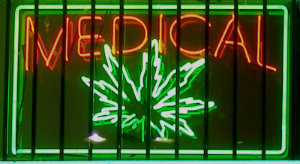Is Legalized Marijuana Getting Popular With Teens?
One of the major world social studies of our time is how to deal with education and legislation surrounding mind and body altering drugs. Everything from cigarettes to alcohol to marijuana and illicit Schedule 1 drugs have been studied within the last few decades. Marijuana, a less dangerous drug than other harsher street drugs was lumped into the same category as cocaine and PCPs and LCD by governments to crack down on what was available to people.
However as society’s attitudes toward the decriminalization of marijuana changed it was worried that society’s younger generations would take up the bong in search of further freedom or because its stigmatism has lessened as a result. Is this true?
Current Legalization Legislation
Unfortunately, with marijuana, the criminalization process further pushed the drug into a position where it was more readily available to minors, not more. A large underground black market enveloped North America with the oft-termed “gateway” drug and so did the plentiful problems that came with it. From increased jail populations to the criminal activities that come with an underground black market.
Legislators have come to realize the social experiment may have been a mistake, especially in hindsight of the studies that have come to light, discussed below. However, there has been major movement across North America for the decriminalization of marijuana and even legalization in a number of states.
This is a state by state system because the Federal government of the US still considers cannabis and medical cannabis a Schedule 1 drug and illegal. However, the federal government has allowed states to pass decriminalization statutes as long as they conform to federal standards.
Four states have completely legalized the recreational and medical uses of marijuana and the District of Columbia, 12 states have decriminalized both substances, a further 10 have legalized medical marijuana use, another three states have decriminalized possession and 22 states still prohibit marijuana although a number only have misdemeanor charges. So has this proliferation resulted in higher usage statistics for teenagers?
Teen Opinion Studies
Many feared the decriminalization process would impact the next generation of users in a negative way, however the opposite has been proved as true. The results from a number of recent surveys of America’s youth prove that education may be a more important social tool than legislation.
One difference found was that although older adolescents are decreasing their disapproval of marijuana use, the  opposite is true of younger teens. Teens between 12 and 14 said that they strongly disapproved of marijuana use to the tune of 79% up five percent from previous polls.
opposite is true of younger teens. Teens between 12 and 14 said that they strongly disapproved of marijuana use to the tune of 79% up five percent from previous polls.
Usage rates among the younger groups of teens also dropped, with young teens dropping from 6 to 4.5% and older adolescents dropped from 26 to 22%. Usage among young adults 18 to 21 years old was unchanged.
What these reports also showed was that although young adult’s usage went unchanged and their disapproval rating of usage decreased significantly from 41 to 23%, this dynamic did not increase usage. In other words, even though disapproval of marijuana usage is falling it should not be confused with increasing approval. It essentially works out to a philosophy of young people with an attitude of ‘to each their own’.
What these studies have also shown is that the more parents or educators disparaged marijuana use the less likely teens are willing to ask about it. This stigma used by parents or educators actually closes down discussion with young people that may be interested in more information simply to make an informed decision.
As a result of the dynamics within these studies, many public education programs are starting to change how they educate young people on the effects of drugs, including marijuana.
Changing Public Opinion Over Time
A recent poll found that across all age groups, there was a significant increase in the number of people that believed marijuana should be legalized. In 2006, 36% of those polled were in favor of legalization, this increased to 52% by 2016.
The study also found that more than half of those in favor of legalization believe that it will happen within the next 10 years. This belief is shared by 56% of millennials, 53% of Gen-Xers, and even 47% of baby boomers.
This sea change in attitude has been credited to a variety of reasons but most notably the slow acceptance of medical marijuana as well as the change from previous generations who saw the drug as taboo.
Many experts are attributing this paradigm shift to education and the change in public perception of marijuana and its users. It is now widely accepted that the vast majority of people who use marijuana are not ‘potheads’ or ‘stoners’ but rather everyday people from all walks of life.
As society has become more accepting of marijuana and its users, the stigma surrounding the drug has begun to dissipate. This is most notable in the way that the media portrays cannabis and its users.
Movies and television shows that once used cannabis as a punchline or as a means to show characters as slackers or losers have now started to show more positive portrayals.
This is also true of the way that celebrities talk about their own personal use of the drug. In the past, many celebrities would avoid talking about their use for fear of damaging their image or careers.
Now, more and more celebrities are open about their use, and some have even started their own marijuana-related businesses.
As the stigma surrounding marijuana continues to dissipate, it is likely that the public’s perception of the drug will continue to change. This could lead to even more people supporting legalization in the future.







